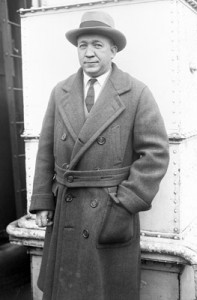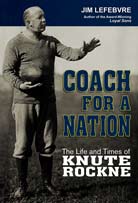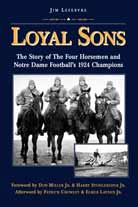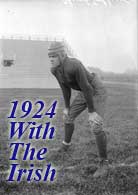On this day 125 years ago — March 4, 1988 — a carriage-maker in the village of Voss, Norway by the name of Lars Rokne and his wife, Mary Gjermo Rokne, welcomed into the world their second child and first son, whom they would name Knute Kenneth Rokne.
So started the remarkable journey of Knute Rockne.
It’s a story than spans oceans and continents, but that is as American as any. An immigrant lad comes to a new country, absorbs its energy, excitement and innovation, and makes his mark on the land as few before him, or since.
Wherever he was in life, Knute Rockne always seemed to have a vision.
He had a vision for how athletics – starting with his beloved track and field, and eventually including football – could serve as a means of striving toward the best person one could be. Dedication, self-discipline, sportsmanship, fairness. These were among the attributes not always self-evident in athletic competition at the time, yet were the gospel Rockne would preach, and live, throughout his athletic career.
He saw how athletics could fit comfortably into the education of a fully developed man. And how collegiate athletics complemented classroom work to challenge and draw out the best traits of young student-athletes. Rockne fought hard against critics of collegiate athletics, always advocating for its inclusion in the academy.
Rockne also had a vision for how football could be played in a different way than in the early years of the 20th century, when its brutality and danger nearly caused its demise.
In Rockne’s mind, football became a combination chess game and track meet on grass, with an emphasis on speed, precision and teamwork. Here’s how he did it.
Throughout his life, Rockne was aware of the rapidly-changing world around him, and his place in it. He wanted to be part of whatever was newer, bigger, faster, better. And what better place than the 1920s in America? The automobile. Steel-and-concrete buildings, including gleaming new stadiums. Radio beaming news and sports to people in a million different places. And, yes, that newest an most daring advance — air travel.
A fellow Scandinavian-American might have said it best.
“The pure Norse strain,” noted Carl Sandburg, “made it inevitable for Rockne to push forward whenever he was conscious of a limit.”
By harkening back to the most positive elements of Viking restlessness and exploration (setting aside conquest per se), we can best understand Rock.
It was his fearlessness that adorned his achievement. Or, some may call it, moving forward despite any fears. He overcame self-conscious stuttering to become one of the most sough-after orators of his time. He left behind a natural shyness to befriend and mentor countless young coaches, athletes, students and teachers in every corner of the nation. He traveled everywhere, met everyone, faced challenges and overcame obstacles…all because of a fearlessness based not so much on self-confidence, but on the notion that there is no other way but forward. We have much to learn from his life.
To listen to another Irish coaching legend, Ara Parseghian, reflect on the impact of Rockne, see below.







